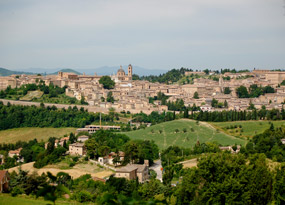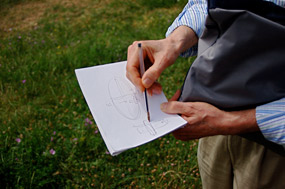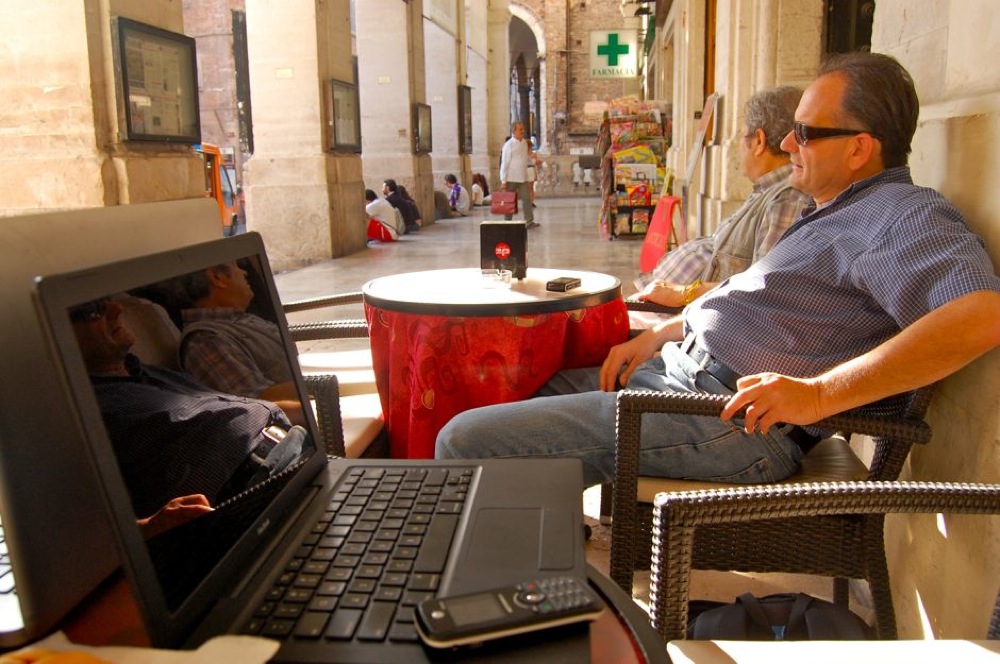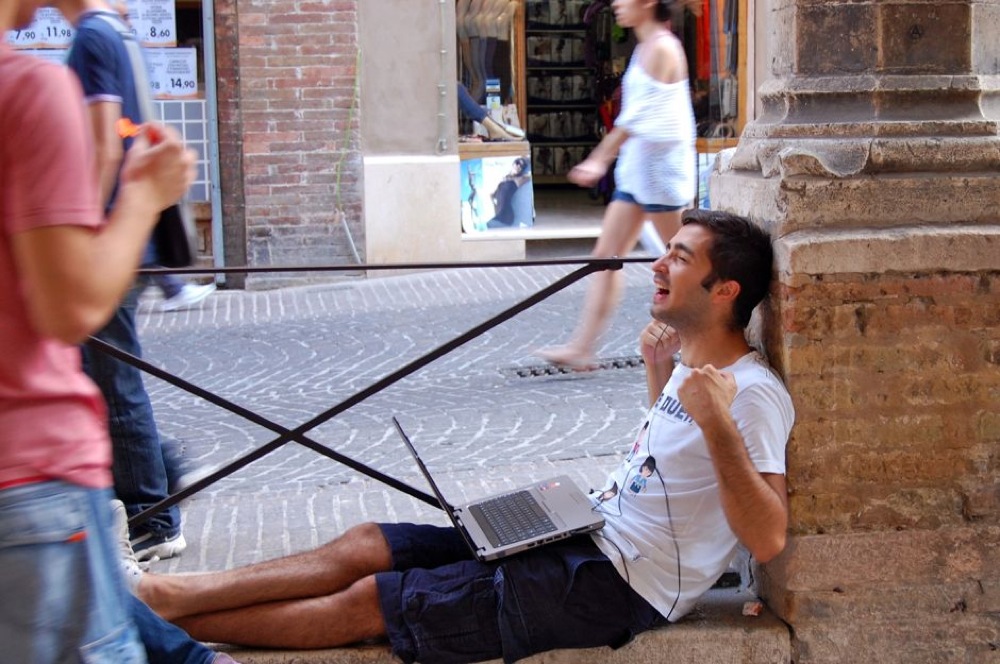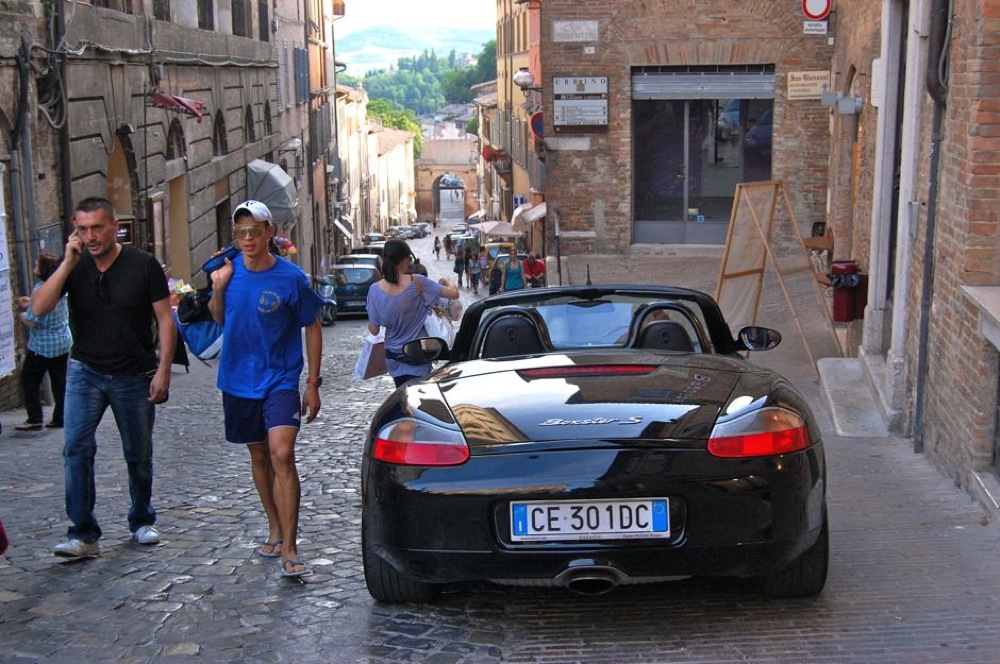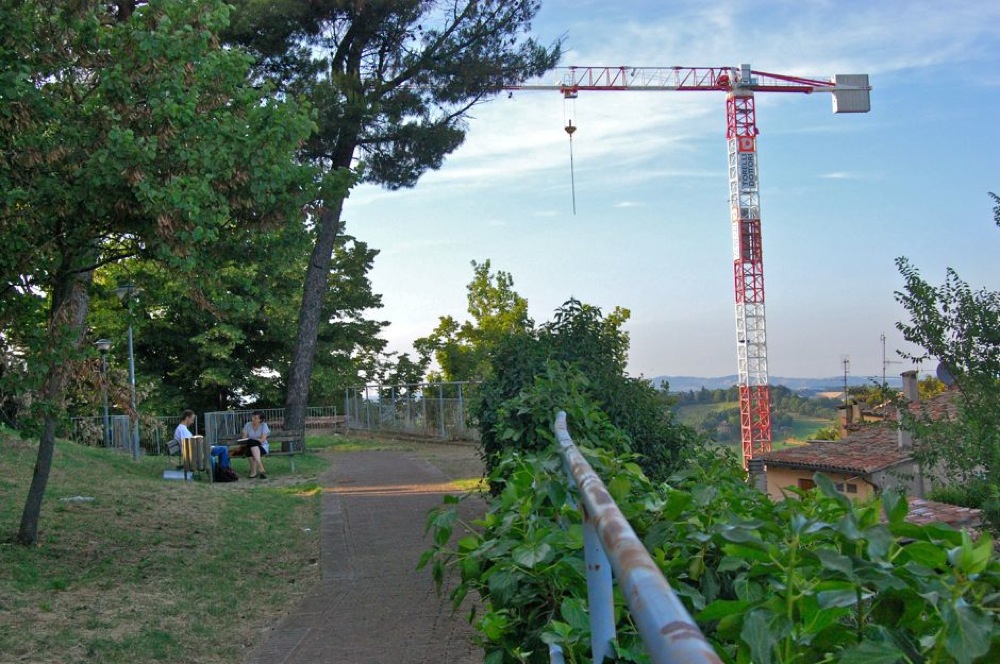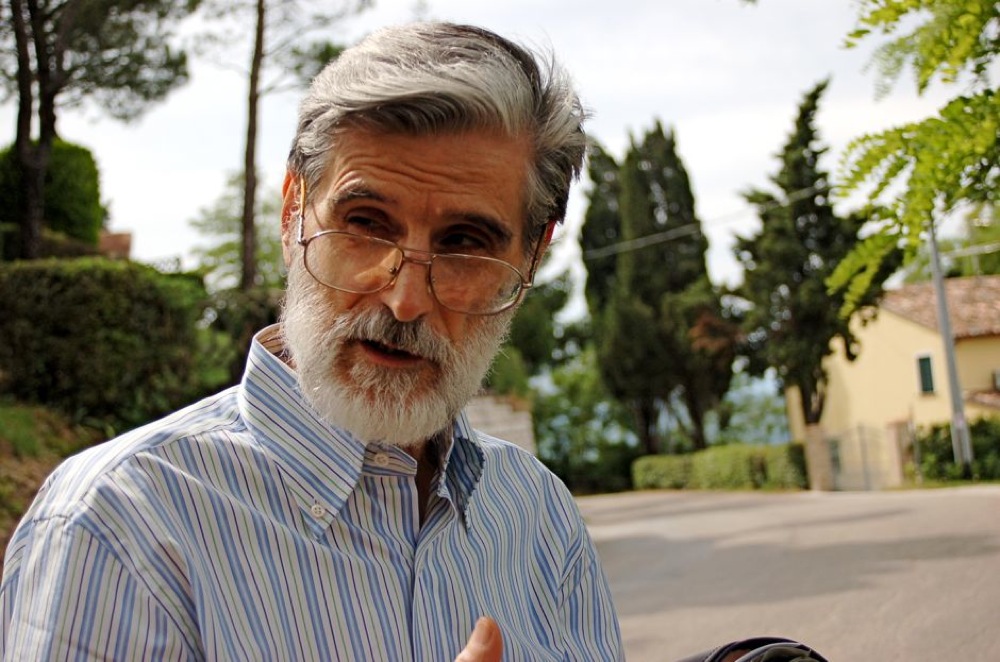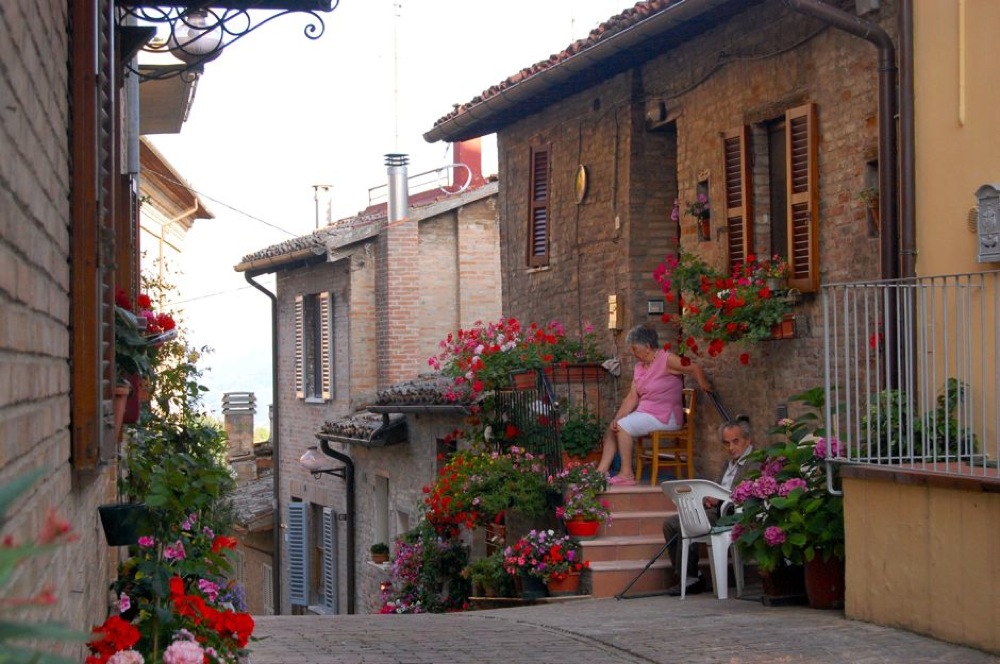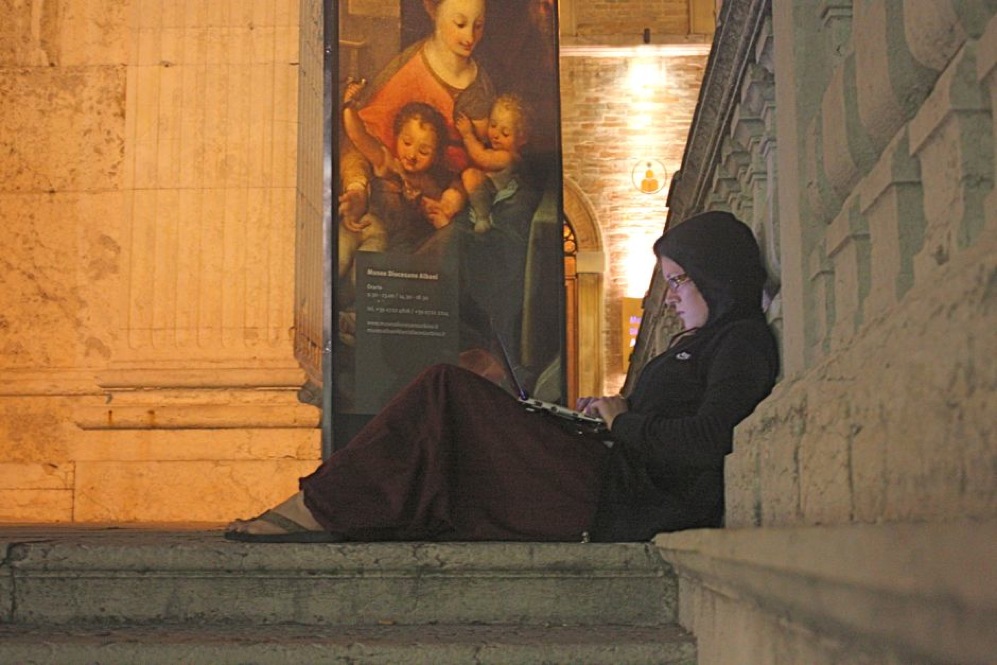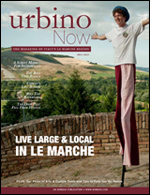While the city of Urbino adapts to modern life, some of Urbino’s most important stories are slowly being forgotten by its youth.
URBINO, Italy – Lamberto Staccioli has a quiet way about him. His manner and dress give the word “gentleman” its oldest and best meaning. His soft words reverberate off the vaulted ceiling of his city’s ancient mausoleum as he describes its history.
Staccioli speaks in his native Italian with scientific precision, reflecting his profession as a chemist and professor. At 66, his hair and beard are more grey than black, and crow’s feet bracket his eyes, which hint at good humor. His movements are measured and his words concise, but his eyes come alive with excitement when he talks about Urbino.
Staccioli is one of the elders in this small Renaissance city, and his family is one of only dozen or so original Urbino families left. He researched and discovered that his family has lived in Urbino since the 1400s. In those times, his ancestors were warriors for the dukes of Urbino and were sent to defend borders and patrol the once vast territory. Centuries passed, the dukes lost power and Staccioli’s family history was forgotten until he decided to delve into old family documents.
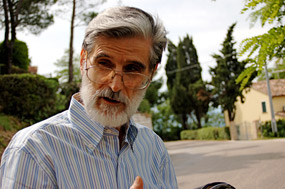
Lamberto Staccioli, who is from one of the last original families of Urbino, stresses the importance of maintaining Urbino's historical past during a time when everything is focused on the future.
Unfortunately, the loss of these family histories is all too common. As the resident population ages, much of the town’s history is slowly forgotten. The piazza is no longer filled with distinguished gentlemen, young families and aging couples, but with rowdy college students who imitate American culture, and embrace modern customs of their own.
On Thursday nights, the students come out to the piazza en masse. The square buzzes with youth eager to relieve the stresses of the week, enjoy time with friends and make new friends. But in the early morning, when the last student has stumbled home, the festivities of the night have left their mark. Broken glass is scattered across the cobblestones, beer bottles litter the piazza and a city that was once the pride of the Renaissance capital looks more like any other small college town.
Located in the seldom toured Marche region (pronounced MAR-kay) of Italy, Urbino was founded in 41 A.D. by the Romans for its strategic hill placement and its large supply of fresh water; however, it wasn’t until the Renaissance that Urbino became one of the most well known cities in all of Europe. Urbino’s power once rivaled that of Rome and Florence and its history includes tales of conspiracy, bastard sons and politically strategic marriages. It is Raphael’s birthplace and a UNESCO World Heritage site.
Despite this, Urbino is now mostly unknown in the world, even by Italian citizens. Urbino’s great achievements in art, culture, and history are being lost. While its place in early modern European history, especially art history, is well acknowledged in books, the more effervescent history of lore, legends and family stories could well vanish.
Staccioli, a historian by hobby, was born in Urbino in 1944. He attended the University of Urbino and studied what was then called the “classics,” which included Latin, Greek, Italian, and history. He was married in Urbino, started a family here and has recently become a grandfather. His two children still live within the fortress walls and his son owns a popular café in the center of town. When asked how he came to know so much about the town, he responds with one, simple phrase that is understood without the need of a translator. “Passione,” he says, “it’s my passion.”
Staccioli has dedicated countless hours poring over history books, attending conventions and exploring the city. The stories and legends he has assembled are not found in any history books. He has knit them together after collecting various facts from each of his sources. Many are filled with compelling tales, ripe with intrigue and conspiracy, such as whispers that Urbino’s most famous duke, Frederico III, may not be the legitimate son of the previous Duke of Montefeltro. Much of his knowledge is derived from a multitude of old documents, history conventions and books, but some of it comes simply from listening and absorbing the stories around him.
I understand the life of a student. I understand that they are young and want to have fun.
This oral history seems lost on the young, Staccioli said. The apathy of today’s generation is something that Staccioli seems to struggle with. Walking to the top of the fortress, a stage from a concert the night before that has yet to be taken down provides a clashing juxtaposition with the view of the ancient city below. The grass is littered with plastic cups and paper from the previous night. He stands atop the hill and surveys the view below with a slight shake to his head. Through a translator, he remarks: “I understand the life of a student. I understand that they are young and want to have fun.”
Staccioli recognizes that students make up the youth of Urbino. Many of the year-round residents are old men and women. The students bring life to the town, and the money spent stimulates the economy. Without the students, the cafés are quiet and the piazza empty. Staccioli also recognizes that the students are the future for Urbino and they are a vital factor in the survival of his hometown.
There was a time in Staccioli’s life that he too was a student at the University of Urbino and didn’t grasp the importance of maintaining the past.
He walks through the old city. “Most people don’t realize how important the story, the history is. They focus on the girls, the cars, the things. There are some people who live their whole lives and never get it.”
He smiles as he watches his grandson run up and down the cobblestone street in front of his son’s café. The piazza is filled with students and all of the café tables have only standing room. “A few, as they get older, realize how great it is. Those are the ones who remember.”
Slideshow
Click on Image to Show in Lightbox.
